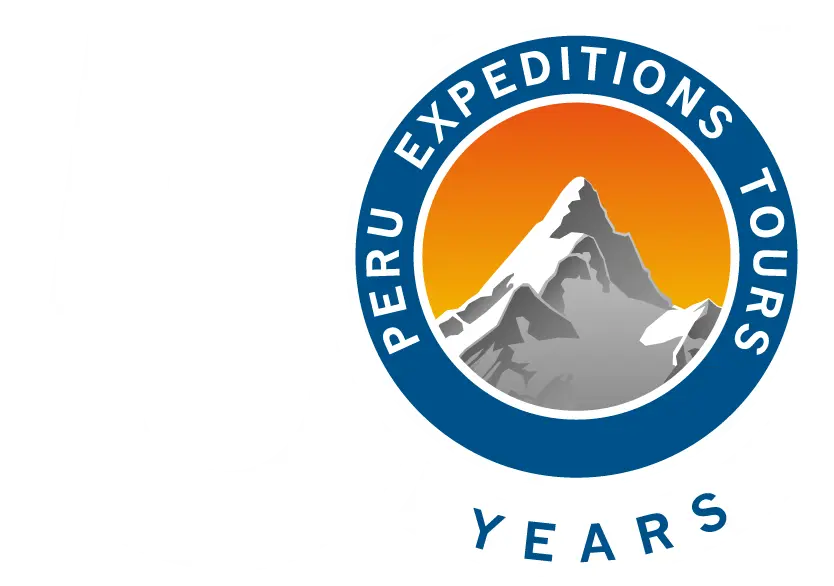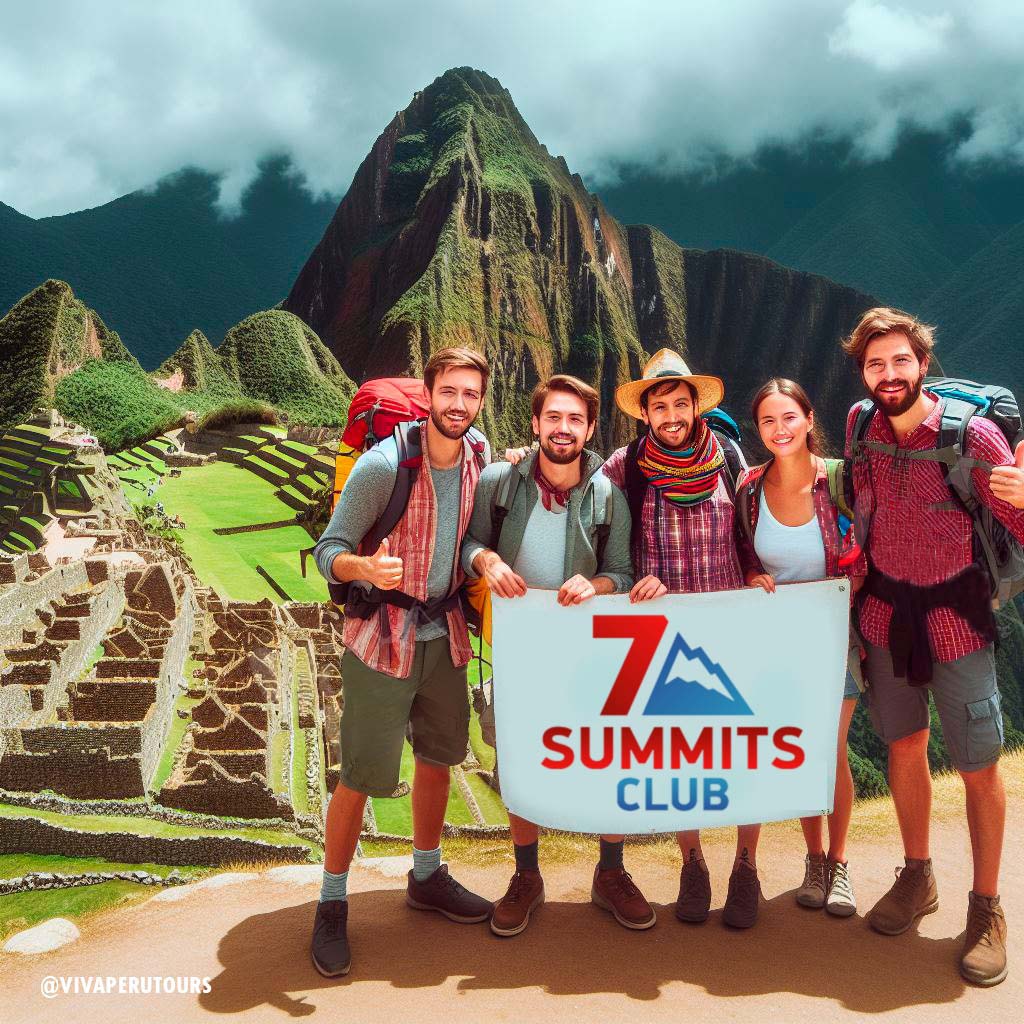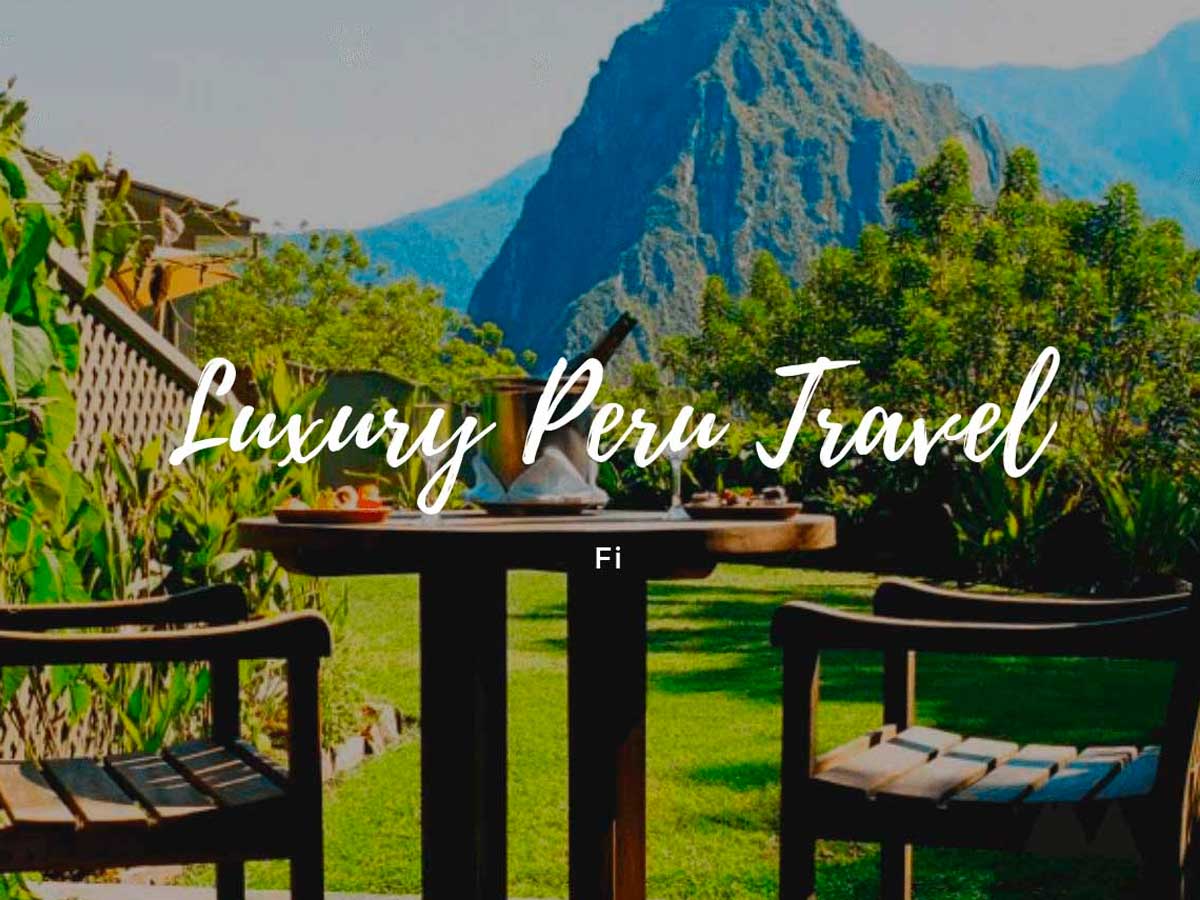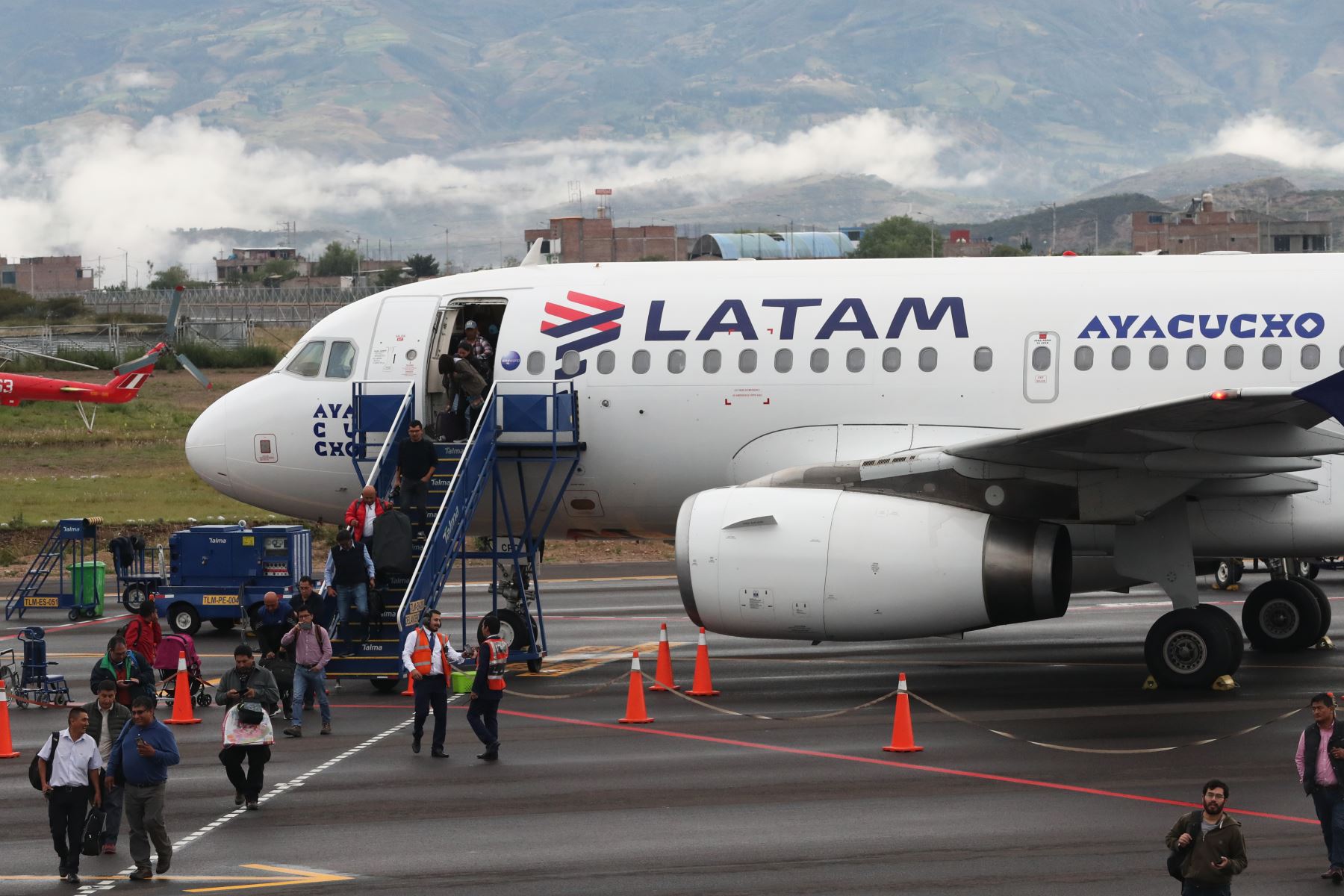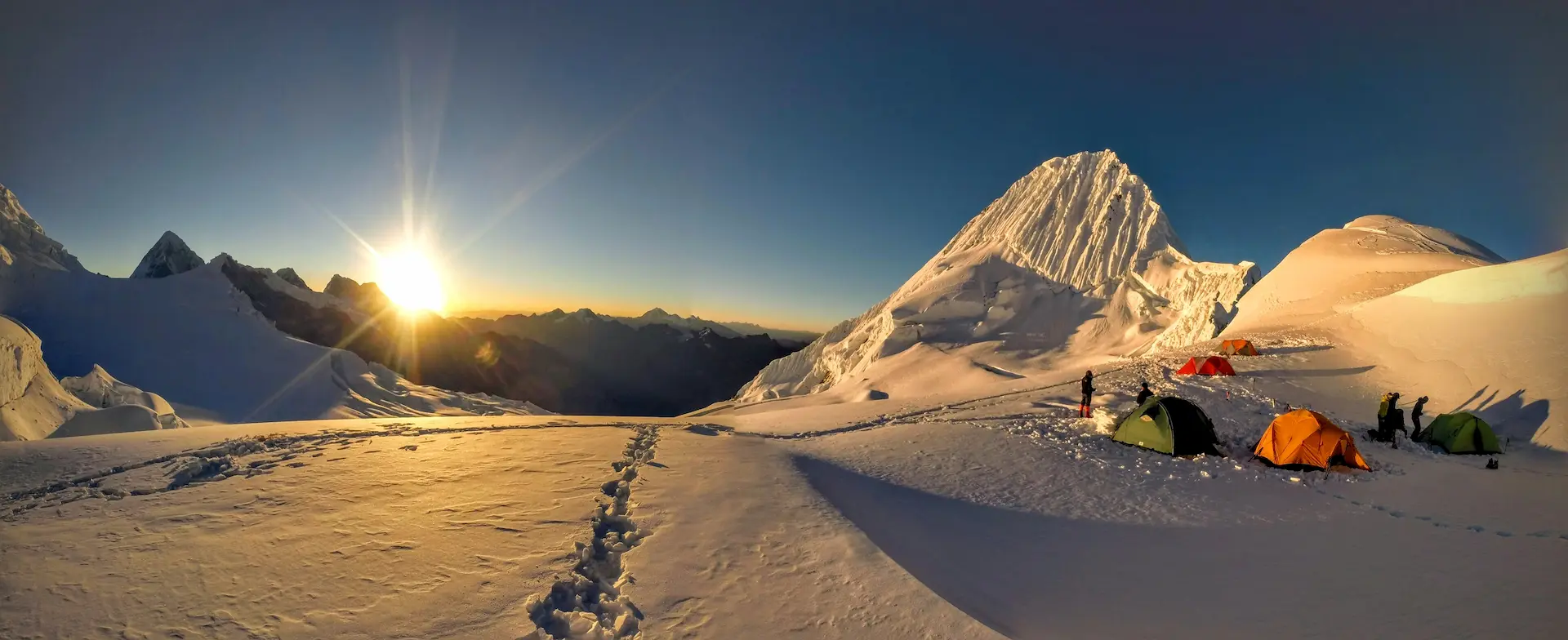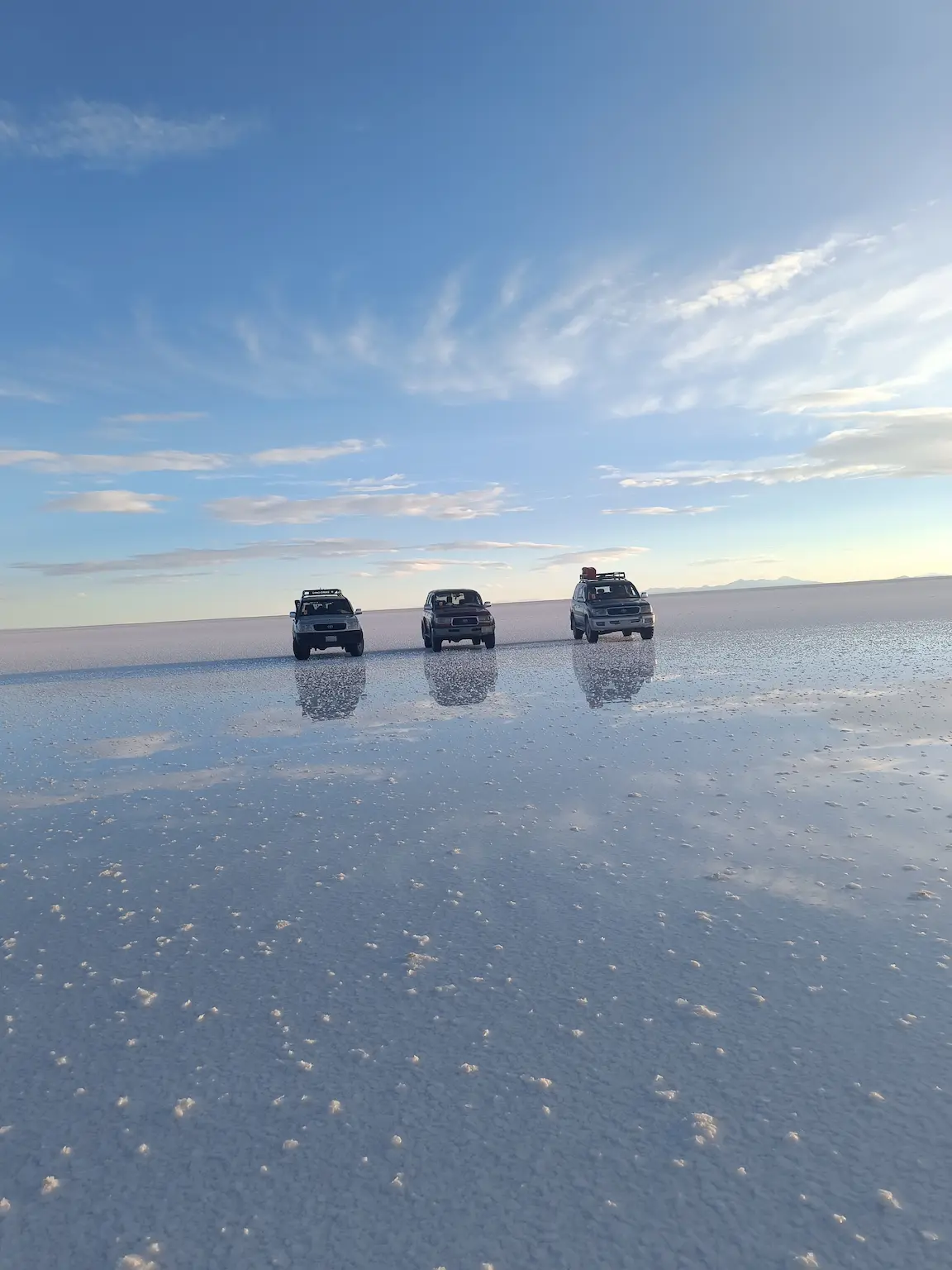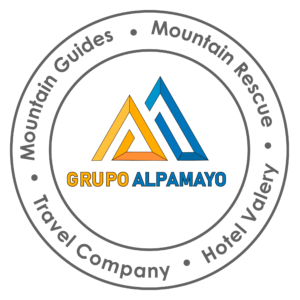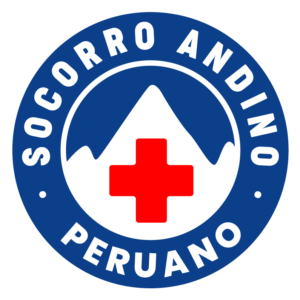The great andes mountain chain stretches the entire length of the South American continent, and is made up of dozens of individual mountain groups known as cordilleras.
In Peru, these snow-capped peaks have been the source of supersition, frustration and inspiration to mankind for thousands of years.
Pre-colombian cultures worshipped individual mountains and made ritual offerings to the deities they believed abided within.
Mountain worship, in remotes areas, is still practiced by Indian groups under the thin veil of Christianity.
The spanish conquistadors, led by Francisco Pizarro, found the Peruvian Andes daunting. Hernando Pizarro, brother to Frascisco, wrote, -…we had to climb another stupendous mountainside. Looking up at it from below, it seemed impossible for birds to scale it by flying through the air, let alone men on horseback climbing by land.-
Long after the spanish conquest, a new breed of conquistadors came seeking victory over high altitudes rather than indigenous cultures.
In the early 1900 s, mountaineers discovered the andes of Peru and began the assault, which still continues, on the highest tropical range in the world. More than 30 majestic peaks rise well over 6000 meters (20,000 feet) in a region that can only be compared to the himalayas in splendour.
And modern-day outdoor enthusiasts have found that walking around mountains is as much of a thrill as climbing them. For these trekkers, Peru is a paradise.
MOUNTAIN CULTURES:
Except for the most remote and rugged areas, the Peruvian Andes offer little in the way of untouched wilderness. Only 23 porcent of Peru is land is arable, and every fertile meter is farmed local indians. For most trekkers. then, getting away means leaving behind the 20th century and becoming acquainted with an indigenous lifestyle centuries old.
The formidable Peruvian Andes, or mountainous region, was tamed by the incas, whose terraced system of agriculture enabled large areas of steep yet fertile land to be cultivated.
This unique system is still employed in some areas, and countless remains of ancient terracing give an insight into the productivity achieved by this civilization.
The mountain indians, or campesinos, today cultivate numerous small plots of ancestral land. During growing season the hillsides are plowed in a variety of geometrec shapes and, as the crops beging to mature, the mountains are carpeted in colors ranging from deep green to warm gold.It is into these areas that trekkers wander along ancient paths, occasionally pausing to scramble by, crossing high andean passes at altitudes above 4000 meters (13,000 feet), and marveling at the glacier-covered peaks which serve as a spectacular backdrop.
It is the very presence of humanity that makes trekking in Peru a unique experience.
There is always the oportunity to stop and converse in simple words or hand signals with local inhabitants.Many of the older campesinos, especially the women, speak only a little spanish-quechua, the language of the incas, is more often heard. Though the highland people are typically reticent with strangers, curious children or brave adults may intiate a comversation by wanting to know where you are from, what is your name, or do you have any sweets-the last question being the most relevant.
Passing remote, populated areas is like stepping back into the past. One or two- room huts constructed of crude mud bricks and topped with ichu grass have changed little in design since incan times.
There is no electricity, and fresh running water is taken from nearby streams. Small courtyards house chickens and cuy, or guinea pig (considered a delicacy in the sierra), and corn along with other grains can often be seen drying in the midday sun.
This typical scene provides an interesting present-day glimpse of an ancient lifestyle, with the trekker as a anachronism in its midst.
PREPARING FOR A TREK
Trekking differs from mountain climbing in that it requires little technical skill and the routes are more lateral than vertical.Most treks in the Peruvian andes are simply extended walks along often steep paths and can be attempted by any reasonably fit and healthy person. Local porters or arrieros, burro drivers, can be hired to help with a heavy load.
When planning a trek, one of the best places to star is in Lima at the south american explorers club, a non-profit information network for the continent.The clubhouse, at avenida Republica de Portugal 146 (Breña), has available an invaluable stock of reports about trails, maps and guidebooks.The friendly staff are more than willing to give advice to both beginners and experts.
The first thing to realize is that, despite the fact that Peru is located in the southern hemisphere, the seasons are not the opposite of those in the northern zone as one would expect.Being so close to the equator, Peru experiences only two climate changes-a rainy season and a dry season. Knowing when to trek is as important as knowing where.
Technically called winter, the months from may through october are the finest for trekking when the weather is clear and dry. During the rainy season, from november through april, skies are often cloudy and rain frequent. Travel during this time can often mean long delays due to washed-out roads and trekking takes on the characteristics of long mud slogs.
Most treks wander through the andean highlands at an altitude of 3,000 to 5,000 meters (10,000 to 16,000 feet). Days are usually sunny with temperatures of 18-24 C (65-75 F).The equatorial sun is strong and frequent applications of sunscreen is a must.
Nights can feel bitterly cold, especially at higher altitudes, so lightweight thermal underwear, a few layers of warm clothes, and a pile or down jacket are necessary. A tent and good sleeping bags are also essential, as well as a dependable stove. White gas, called bencina, is usually available, but is often of low-grade quality which can clog up a temperamental cooker. Kerosene and leaded petrol are other choices for use in a multifuel stove.
Lightweight hiking boots are suitable for the majority of trails. The best equipment is a vailable in your home country, but if the idea of lugging around an assortment of gear does not appeal, most necessities can be hired in the major trekking centers of Huaraz and Cusco for only a few dollars a day. The quality of hired equipment can vary widely; be sure to check that it is at least adequate.
Stoves, especially, have been known to conk out after just a few miles into the trek.
THAIN MOUNTAIN AIR:
Before setting off, spend a few days becoming acclimatized to the altitude with short hikes around the area. The thin. High-altitude air can quickly exhaust the unaccustomed and cause physical discomfort. Headaches, mild nausea, shortness of breath and sleeplessnes are some of the common symptoms of high altitude sickness, or soroche. By avoiding alcohol and fatty foods in the first few days, and drinking plenty of liquds, the affects of altitude will be minimized. Many find that sucking on hard candies and drinking tea made from the cocoa leaf, called mate de coca, also help to reduce the symptoms
Food for treks can be easily found in the larger villages, but the freeze-dried variety, along with many western luxuries, is nonexistent. Package soups and dried pastas, aswell as dried fruits and grains, are readily available in the markets. Favorite spices brought from home take up little room and add flavor to the evening meals. Take as much as will be needed for the duration of the trek since it is unlikel that anything will be available on the way other than the occasional piece of bread or fruit in the most populated areas.
A multi-fuel cooker is essential since there is no wood for fires at higher altitudes, and using up the scarce reserves at lower levels only adds to the serious problem of soil erosion that plagues the area.
All drinking water should be treated by using purification tablets, iodine solution or a filtering pump. Lodine works better than chlorine-based purifiers because of its abitity to kill more pesky bacteria.The taste of treated water is not especially palatable, but drink-flavored powder can be bought in most shops, and not only hides the chemical taste but adds energy-boosting sugar to the diet.
The Peruvian Andes offer unlimited trekking possibilities. Still, trekkers are drawn to a few special places.
THE INCA TRAIL TO MACHU PICCHU
Of all the popular treks in South America, the fourth to five day Inca Trail is legendary.The adventure begins with a four-hour train ride along the Urubamba river, known to the Incas as the sacred Valley.
Legions of early-rising campesinos, loading and unloading their marketetable goods at every station, crowd together in what begins to look more like a cattle car than a passenger train. At kilometer 88 the train pauses briefly allowing hikers to disembark. Here at the trailhead, a foobridge temporarily separates the trekker from a rich history dating back more than 400 years.
Hiking tours to Machu Picchu
Many are the routes that take you to Machu Picchu, but none is like the Inca Trail Tours, the most famous pedestrian path in the Americas. After flying from the capital of Perú, Lima, you will arrive in Cusco to walk for four days along a path through forests and dense fog, millenary stone steps and discovering the ruins of ancient fortifications and Inca cities, and all the time enjoying majestic views.
- Salkantay Trekto Machu Picchu 5 days
- Hiking the Inca Trail to Machu Picchu 5 days
- Inca Quarry Trail4 Days
- 2 Day Inca Trail Tour
- 2 Day Inca Trail with Camping
- 3 Day Inca Trail
- Vilcabamba Hike to Machu Picchu 6 days
- Choquequirao trek to Machu Picchu 9 days
- Ausangate trek 7 days
If you want to visit Machu Picchu, we recommend you to book your Machu Picchu Ticket in advance, so you will enjoy your Vacation in Machu Picchu without any problem.
When is the best time to hike to Machu Picchu?
The best season is during the dry season, which covers the months April to the end of September. In October the rains begin and you can find Machu Picchu covered by clouds. If you travel in June, we recommend you to book the Inti Raymi 2020 Tour that takes place in June 24th, and also hike the Palcoyo Mountain Tour, which is an incredible Rainbow Mountain located in the Andes.
Source:
